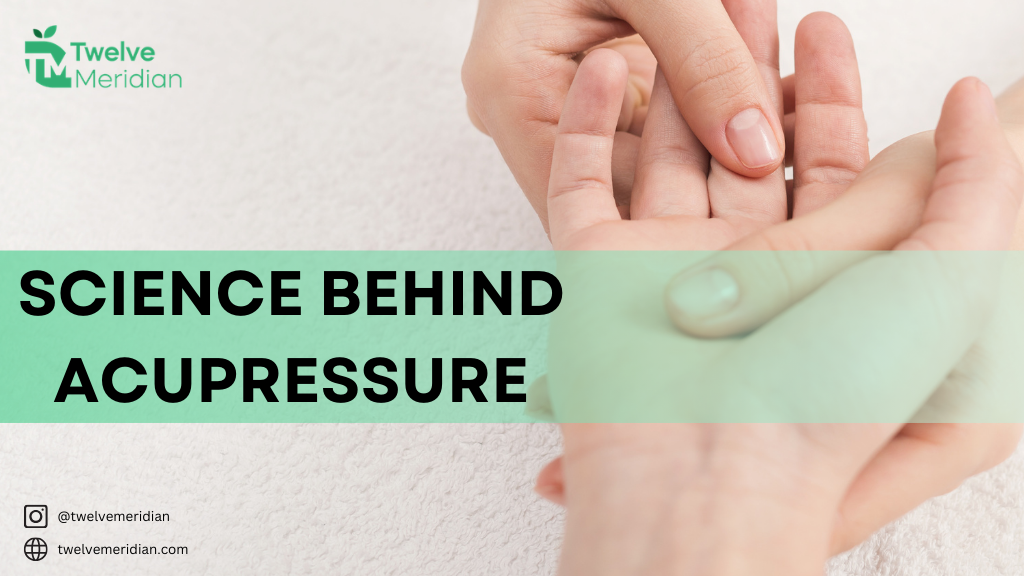Acupressure, a time-honoured practice rooted in traditional Chinese medicine, has garnered significant attention in the realm of alternative therapies. This technique, which involves the application of pressure to specific points on the body, is believed to stimulate the body’s natural healing abilities. Despite its ancient origins, the true effectiveness of acupressure remains a subject of modern scientific scrutiny. This is where “acupressure research” plays a pivotal role.
Delving into this research helps bridge the gap between traditional practices and contemporary scientific understanding. As we explore the depths of “acupressure research,” we uncover fascinating insights about this age-old practice, offering a blend of historical wisdom and modern science. In this comprehensive guide, we will sift through the layers of “acupressure research” to understand how and why acupressure might just be more than a mere folk remedy.
Historical Context of Acupressure
The journey of acupressure, from an ancient healing art to a subject of contemporary “acupressure research,” is as fascinating as it is long. Originating in China over 5,000 years ago, acupressure was developed alongside acupuncture, with both practices based on the concept of life energy (Qi) flowing through meridians in the body. The belief was that blockages in this flow lead to health issues, and acupressure aimed to restore balance by stimulating specific points.
As these practices spread across Asia, they evolved, absorbing influences from different cultures. It wasn’t until the 20th century that acupressure began to pique the interest of Western medicine, leading to a surge in “acupressure research.” This research aimed to demystify the practice, moving beyond anecdotal evidence to scientific evaluation.
Today, “acupressure research” continues to explore the mechanisms behind acupressure, seeking to integrate it with conventional medical knowledge. This historical shift from traditional to evidence-based practice has played a crucial role in acupressure’s acceptance in modern complementary medicine.
Understanding Acupressure: The Basics
To truly appreciate the findings of “acupressure research,” it’s essential to understand the fundamentals of acupressure itself. At its core, acupressure involves applying pressure to specific points on the body, known as acupoints. These points are believed to correspond to different organs and systems within the body. The practice is based on the traditional Chinese medicine theory of Qi (pronounced “Chee”), an energy that flows through pathways in the body called meridians.
Acupressure’s approach is non-invasive, using fingers, palms, elbows, or special devices to apply pressure, unlike acupuncture which uses needles. The goal is to release blocked Qi, thereby alleviating symptoms and promoting overall wellness. “Acupressure research” often focuses on understanding how stimulating these points can lead to physiological changes in the body.
One of the critical aspects of “acupressure research” is differentiating its effects from placebo. Researchers aim to ascertain whether the benefits are due to the specific points used or the general effect of touch and relaxation. This is a significant challenge in validating acupressure’s efficacy.
“Acupressure research” has also delved into mapping these acupoints and understanding their supposed connections to various bodily systems. This research is crucial in bridging traditional practices with modern anatomy and physiology, providing a more comprehensive understanding of how acupressure might work.
Scientific Studies on Acupressure
The heart of “acupressure research” lies in empirical studies that seek to quantify and validate the effects of acupressure. A significant body of research has focused on pain management, stress reduction, and the treatment of chronic health conditions. These studies often employ randomized controlled trials (RCTs), considered the gold standard in clinical research, to provide reliable and unbiased results.
For instance, a notable study published in the Journal of Pain Research demonstrated that acupressure significantly reduced lower back pain and improved function in participants compared to conventional physical therapy. This kind of “acupressure research” not only validates the practice but also offers insights into potential mechanisms at play, such as the release of endorphins or improved blood circulation.
Pain Relief and Stress Reduction
Pain relief is one of the most researched areas in “acupressure research.” Studies have consistently shown that acupressure can effectively reduce various types of pain, including headaches, menstrual cramps, and post-operative pain. The mechanism is believed to involve the stimulation of acupoints that trigger the release of endorphins, natural pain-relieving chemicals in the body.
Stress reduction is another significant focus of “acupressure research.” Acupressure is thought to lower stress by stimulating the body’s parasympathetic nervous system, which induces relaxation. Research published in Evidence-Based Complementary and Alternative Medicine found that acupressure effectively reduced stress levels in health professionals, a group known to experience high levels of occupational stress.
Health Benefits Beyond Pain and Stress
“Acupressure research” has also explored benefits beyond pain and stress management. For example, studies have investigated its effects on sleep quality, digestive health, and even mental health conditions like depression and anxiety. In these areas, while promising results have been observed, “acupressure research” often highlights the need for further studies to fully understand the scope and limitations of acupressure’s effectiveness.
Methodological Challenges
A recurring theme in “acupressure research” is the challenge of methodological design. The placebo effect, a significant factor in any therapeutic intervention, is particularly pronounced in practices like acupressure. Designing studies that can effectively separate the specific effects of acupressure from general relaxation or the therapeutic relationship is complex. This has led to a call for more rigorously designed “acupressure research” studies to provide clearer evidence.
Comparative Analysis with Other Therapies
“Acupressure research” often involves comparing acupressure’s effectiveness with other therapeutic practices, such as acupuncture, massage therapy, and reflexology. This comparative analysis is crucial in understanding where acupressure stands in the wider spectrum of complementary and alternative medicine.
Acupressure and Acupuncture
While both acupressure and acupuncture are based on the concept of stimulating specific points along the body’s meridians, the key difference lies in the method of stimulation. Acupuncture uses needles, whereas acupressure uses pressure. “Acupressure research” indicates that while acupuncture is generally more potent, acupressure offers a non-invasive and more accessible alternative, making it suitable for people who are needle-sensitive or looking for self-treatment options.
Massage Therapy
Massage therapy involves manipulating the body’s soft tissues to promote relaxation and wellbeing. Unlike acupressure, which focuses on specific points, massage covers broader areas of the body. “Acupressure research” suggests that while both practices are effective for stress relief and pain management, acupressure’s targeted approach can be more beneficial for addressing specific conditions like headaches or digestive issues.
Reflexology
Reflexology, like acupressure, involves applying pressure to specific points. However, reflexology primarily focuses on the feet, hands, and ears, based on the belief that these areas correspond to different body organs and systems. “Acupressure research” often studies these two practices in conjunction, highlighting their complementary nature in holistic treatment plans.
The Unique Benefits of Acupressure
What sets acupressure apart, as highlighted in “acupressure research,” is its simplicity and adaptability. It can be easily learned and self-administered, making it a versatile tool for managing minor ailments and enhancing overall wellbeing. Additionally, acupressure’s non-invasive nature makes it a widely accessible form of therapy, suitable for diverse age groups and physical conditions.
Case Studies and Personal Testimonies
Personal testimonies and case studies provide a human dimension to “acupressure research,” illustrating its effects in real-world scenarios. These stories often resonate deeply, offering a glimpse into the potential transformative power of acupressure.
Case Study Highlights
One remarkable case study involved a patient with chronic migraine headaches who found little relief from conventional treatments. After incorporating acupressure into her routine, she reported a significant reduction in the frequency and intensity of her migraines. This case aligns with “acupressure research” findings on pain management, demonstrating how acupressure can serve as a complementary therapy in treating chronic conditions.
Personal Testimonies on Stress and Anxiety
Numerous personal testimonies highlight acupressure’s role in managing stress and anxiety. For example, a study in the Journal of Acupressure and Acupuncture reported on individuals experiencing high levels of workplace stress. These individuals, after using acupressure techniques regularly, noted a marked improvement in their overall stress levels and quality of life, corroborating the stress-reduction benefits identified in “acupressure research.”
Enhancing Wellness and Quality of Life
Beyond addressing specific health issues, many people turn to acupressure for general wellness. Personal testimonies often mention improvements in sleep quality, energy levels, and a sense of balance and well-being, echoing the holistic benefits highlighted in “acupressure research.”
Supporting “Acupressure Research” Findings
While anecdotal evidence should not replace scientific research, these real-life examples provide supportive context to the findings of “acupressure research.” They illustrate how acupressure, when applied correctly, can significantly impact individuals’ health and quality of life.
Challenges and Limitations in Acupressure Research
While “acupressure research” has provided valuable insights, it faces unique challenges and limitations. One of the primary hurdles is the subjective nature of acupressure’s effects, which can vary greatly from person to person. This variability makes it difficult to standardize studies and draw definitive conclusions.
The Placebo Effect
The placebo effect represents a significant challenge in “acupressure research.” Determining whether the benefits are due to the specific pressure points or general relaxation and care received during treatment is complex. This necessitates the design of sophisticated studies with control groups and placebo treatments to isolate the true effects of acupressure.
Replicability and Consistency
Another issue is the replicability of results across different studies. Due to varying methodologies and acupressure techniques, results can be inconsistent. This inconsistency can lead to scepticism and questions about the validity of “acupressure research.”
Future Research Directions
Despite these challenges, the field of “acupressure research” is evolving, with researchers continually striving to improve study designs and methodologies. There is a growing focus on larger, more diverse study populations and long-term follow-up to better understand acupressure’s effects. Future research will likely delve deeper into the mechanisms behind acupressure, contributing to its integration into mainstream healthcare practices.
Conclusion
In sum, “acupressure research” offers a fascinating blend of ancient tradition and modern scientific inquiry. While challenges in research methodologies and variability of effects exist, the potential benefits of acupressure in pain relief, stress reduction, and overall well-being are undeniable. As we continue to explore and understand the mechanisms behind acupressure, it holds promise as a valuable complement to conventional medicine. The journey of “acupressure research” is one of discovery and validation, bridging the gap between old wisdom and new knowledge, and reinforcing the importance of holistic approaches in healthcare.



